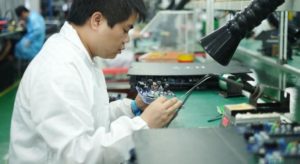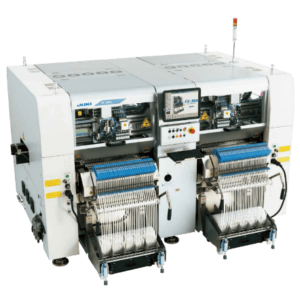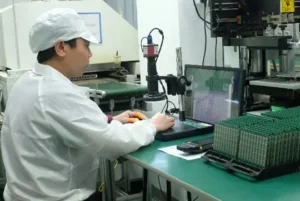Delivery time is a crucial factor to consider in PCB manufacturing. It becomes vital, especially for rush orders, which typically take 5-7 days to complete. However, if you depend on component sourcing, you may struggle to complete the orders unless you already have the components ready in stock.
UETPCB is a leading PCB and assembly manufacturer in China. To meet rush PCB orders, the company must maintain enough production lines, R&D, and QC. To stay competitive, UETPCB prioritizes advanced manufacturing systems. The company provides fast and reliable delivery to meet various customer demands. The company ensures fast production and excellent logistics services.
Understanding Rush Orders in PCB Manufacturing
A rush PCB order requires a much shorter delivery time than usual. Usual PCB orders take around 3-4 weeks. In contrast, rust PCB orders take only days. Rush orders need overtime labor, special handling, and the fastest logistics.
You must balance the speed, cost, and quality of PCB manufacturing. In general, faster delivery increases the cost of manufacturing. You will need overtime labor, priority processing, and expedited shipping.
However, if you compromise quality for speed, your products will have defects. Later, your customer may not accept them, or you may have to rework them. Therefore, you must find a balance to meet your customer’s deadline. Of course, reliability should be the priority.
Three common factors typically affect the turnaround time for rush PCB delivery. The first factor is design complexity. As you know, simple designs with fewer layers are easier to make. Standard components are always available, meaning faster assembly. However, complex designs and custom parts take more time.
The second factor is the availability of key components. If the key elements are out of stock, you must wait until they are available. In rush orders, you cannot typically predict what kind of components you may need. Within a short period, it isn’t easy to manage the components. Unless you already have the components ready in your stock. Once the rush orders come in, you can quickly complete them.
The third factor is the capacity. Factories with a lot of space can handle orders quickly. Most of the time, they have more machines and laborers. On the other hand, smaller manufacturers may have trouble meeting tight schedules.
How to Deliver Rush PCB Orders in 7 Days
Manufacturing and delivering PCBs for rush orders might be challenging for you. It needs professional planning, fast processes, and efficient logistics. Thanks to UETPCB, they ensure all these factors to provide rush PCB orders in 7 days.
Strategy #1 Proper Planning and Designing of the Final PCB Product & Assembly
You must first ensure the proper planning and designing of the final product. Most manufacturers waste a lot of time here due to a lack of information. Sometimes, the client cannot provide enough information about the product. Also, we have seen that most customers ask for OEM manufacturing but cannot provide sample products. In such situations, most factories struggle to prepare the design quickly.
Optimizing the Production Lead Times
Lead time refers to the production time required to complete a successful delivery. Generally, a 2-layer PCB usually takes 5 to 8 days to build. For extra urgent delivery, it could be done in 2 days. On the other hand, a 4-layer PCB usually takes 5 to 12 days. It is possible to complete this order in 2 days for extra urgent delivery. Similarly, 6, 10, or more layers of PCB can be delivered in 4 days or a week.
Shortening these lead times is crucial to meet rust PCB order requirements. You must streamline every step, from design to assembly. You can also employ automated processes to speed up the production. Also, you can create an advance plan to ensure materials and components are available when needed.
Speed Up the PCB Design Process
As mentioned, most factories, especially inexperienced ones, take much time to design. This not only delays production but also loses the customer’s trust. A fast design process is the key to quick production. You can invest in more automated tools and software to speed up this process. Also, you must employ DRC, ERC, and more to simplify the overall design process.
Pre-Production Verification
Before mass production, always verify the design first. In this case, you must ensure your engineers create prototypes and run tests before the final output. You can also update the simulation software and reduce the use of old technology.
Strategy #2 Advanced Equipment and Technology
The use of advanced equipment and technology can speed up PCB manufacturing. The traditional method takes a lot of time. For example, soldering by hand takes much more time than a machine. However, automated machines, in this case, reduce production time a lot.
Fast PCB fabrication machines are capable of printing circuit board layers quickly. Besides, laser drilling and direct imaging also speed up the production process. Instead of relying on manual inspection, you can invest in AOI for faster quality and control works.
Pick and place machine assembly components faster than manual workers. It is evident that these machines ensure accuracy and, at the same time, reduce human errors. Besides, automated soldering also speeds up PCB delivery times. Reflow soldering and wave soldering are the two most common automated soldering techniques.
Strategy #3 Efficient Production processes
If you want to speed up your production process, consider the efficiency. Three factors are crucial in this case: lean manufacturing, parallel processing, and fast prototyping.
Lean manufacturing is a process that discusses reducing waste and improving efficiency. This is a crucial topic for PCB manufacturing. Parallel processing is the multiple production lines. You can employ more production lines instead of waiting for one process to finish. Fast prototyping allows quick testing before full production.
Strategy #4 Effective Communication Planning
Good communication always prevents misunderstandings and delays. In PCB manufacturing, even small miscommunicating can cause significant setbacks. Your designers’ engineers and manufacturers must communicate professionally. There should be a channel of communication. Each product can be discussed in that channel if any customization can be done quickly.
Clients must provide complete and accurate design files. You can offer some platforms for easy communication if they need any changes. You can invest in creating a flexible website for communications. Other social media platforms allow you to open your customer support portal.
Strategy #5 Quality Control Measures
You should also focus on other processes to speed up the PCB delivery. Q&C or quality and control measures are crucial production parts. This section also plays an essential role in speeding up the whole process.
Instead of relying on old techs, you can focus on the modern types of machinery for testing. There are different kinds of testing processes. Automated Optical Inspection (AOI) or X-ray inspection are typical testing methods.
Besides, many traditional factories rely on manual test data entry. In this case, you can automate it. For example, while taking the environmental test data, you can use a database to record the test data. Then, before delivering, people can quickly download and print it in the storage section. This way, you can reduce the time to transfer the test reports from the Q&C department to the store & shipment section.
Strategy #6 Component Sourcing and Logistics
Components sourcing is one of the most critical parts of PCB fabrication. You must ensure that you have enough components before starting the assembly process. Indeed, component sourcing delays PCB rush orders. Proper sourcing and logistics are very crucial for quick turnaround.
You can ensure pre-stocking for the PCB components. You can stock PCB components for future assembly based on your customer demands. Standard components, such as resistors, capacitors, and ICs, should always be available.
Strategy #7 Choosing the Right Shipping Method
Finally, the speed of the PCB delivery of rush orders also depends on the correct shipping method. There are a wide range of shipping methods in China. You must choose the correct shipping method to ensure a quick turnaround for PCB rush orders.
Express shipping is the fastest way to deliver PCBs. It involves air shipping. Companies like DHL, FedEx, and UPS offer excellent international express services. You must consult with the client to choose the correct shipping method based on your location. These companies provide door-to-door services.
Besides, other air rights services are also relatively faster. In this case, sea shipping is not ideal for rush PCB order delivery in 7 days. By sea, delivery usually takes about 1 to 3 months.
You cannot forget about customs clearance management in a specific country. Custom clearance can cause delays in PCB rush orders. You must ensure proper documentation, like invoices and shipping details, to ensure on-time delivery to your client’s location.
Final Thought
You can now realize that completing rush PCB orders in just seven days is possible. All you need to do is ensure proper planning and efficient processes. A well-structured design always speeds up production and prevents errors.
Communication between the factory and the client is also very important. You must ensure that you have sufficient means of communication.
Fast component sourcing also plays a big role here. You must partner with reliable suppliers to prevent shortages. Besides, you must choose the correct shipping method to ensure quick delivery.
UETPCB is a leading manufacturer of PCBs and assemblies. It has a successful record of maintaining returning customers, which means that it always pays attention to the advanced manufacturing process. UETPCB can deliver rush PCB orders in just seven days. If you have any questions, feel free to contact us.



